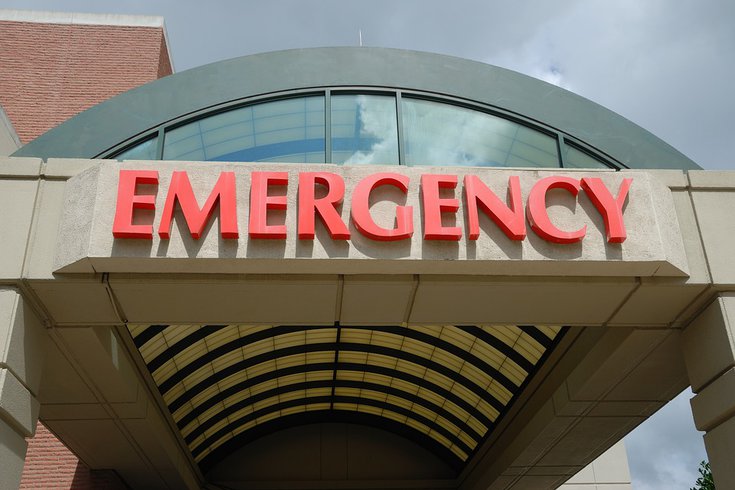
February 21, 2022
 Paul Brennan/Pixabay
Paul Brennan/Pixabay
The CDC found an increase in emergency department visits among teenage girls throughout the pandemic. In particular, visits for eating disorders doubled, and visits for tic disorders tripled.
Adolescent girls accounted for the largest increases in emergency department visits for mental health conditions in 2020, 2021 and January 2022 compared with 2019, a new study from the Centers for Disease Control and Prevention found.
The study supports previous research on the subject and is another exploration of the impacts of the COVID-19 pandemic on adolescent mental health. The agency used data from the National Syndromic Surveillance Program, analyzing three periods of time throughout the pandemic: March 15, 2020 until Jan. 1, 2021; Jan. 2, 2021 until Jan. 1, 2022; and Jan. 2, 2022 until Jan. 29, 2022.
Researchers found that among girls ages 12-17, emergency department visits increased for eating and tic disorders in 2020, 2021 and January 2022. Visits for obsessive-compulsive disorder increased in 2021 and 2022, while visits for depression increased in 2021. Visits for anxiety and trauma-related disorders also increased in January 2022.
While overall emergency department visits among children and adolescents decreased in 2020 and remained stable throughout 2021, mental health-related visits accounted for a larger proportion during the pandemic compared to 2019.
"The results of the report are unsurprising," Dr. Neha Chaudhary, a child psychiatrist at Harvard Medical School, told ABC News. "This is quite in line with what I'm seeing in my clinical practice and what I'm hearing from teens directly. Many teens with preexisting conditions like depression or anxiety noted worsening of their symptoms since the pandemic, while others with previously diagnosed conditions noted having symptoms for the first time."
The study shows how eating disorders can be triggered by stressors brought on by the COVID-19 pandemic, like a lack of daily structure. The CDC stated that the "highly complex nature of individual experiences" makes it difficult to pinpoint a singular cause of the increase in emergency visits due to mental health concerns.
However, social media could play a role, particularly in eating disorders and tic disorders. Researchers said the findings on tic disorders are atypical, as these usually develop earlier in life and are more prevalent in males than females. They also said exposure to severe tics on social media could have an impact on the increased frequency of tic-like behavior.
In 2021, several pediatric health organizations declared a national emergency for children's mental health, which they say has been negatively impacted by the pandemic. Last week, Dr. Tami Benton, psychiatrist-in-chief at the Children's Hospital of Philadelphia, testified to Congress about the devastating impact the public health crisis has had on children and adolescents.
"We have not one, but two urgent tasks before us: Addressing the immediate and undeniable crisis facing kids today and reframing our pediatric mental health system to provide the right care, at the right place and at the right time," Benton said.
The study states that adverse childhood experiences – including the 140,000 children in the United States that have lost a parent or primary caregiver due to COVID-19 – could have an impact on the onset of mental health conditions. Further, pandemic-era changes in daily structure and social communication could have an adverse impact on children and teenagers too.
"You take a very vulnerable group and put on a global pandemic," Emily Pluhar, pediatric psychologist at Boston Children's Hospital, told The New York Times. "The eating disorders are out of control."
The National Association of Anorexia Nervosa and Associated Disorders says that eating disorders impact at least 9% of the population worldwide, and 28.8 million Americans will have an eating disorder in their lifetimes. About 35-37% of adolescent girls use diet pills or laxatives and engage in crash dieting, fasting and self-induced vomiting.
Young people with eating disorders, like anorexia nervosa, have 10 times the risk of dying compared to their same-aged peers, according to the National Eating Disorders Association.
In an analysis of the study, researchers noted the importance of early intervention and prevention strategies aimed at teenage girls who may be at an increased risk of mental health conditions that can be exacerbated by the pandemic.
There are several typical warning signs of eating disorder development. Behaviors and attitudes that indicate weight loss, dieting and control of food are becoming primary concerns. Other signs, like restricting food, social withdrawal, mood fluctuations and noticeable weight fluctuations are common warning signs of various eating disorders.